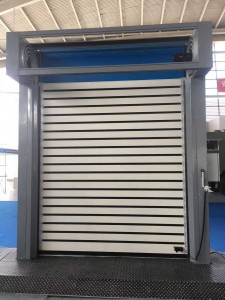Detailed analysis of the installation steps of stacking doors
The installation steps of the stacking door are a meticulous and important work, involving multiple links and precautions. The following will introduce the installation steps of the stacking door in detail to ensure that the installation process goes smoothly and achieves the desired effect.
First, make preliminary measurements and positioning. According to the drawings and requirements provided by the designer, accurately mark the installation height, direction, door frame and orientation line of the stacking door. This step is crucial and will provide an accurate benchmark for subsequent installation work.
Next, fill the door frame of the stacking door with mortar. Mix cement mortar in a certain proportion and then fill it evenly into the door frame. When filling, pay attention to controlling the filling ratio to avoid deformation of the door frame due to excessive filling. After filling, check whether the door frame is flat. If there are any uneven places, smooth them with mortar in time.
Then, check the door opening of the stacking door. Make sure that the size and position of the door opening meet the installation requirements. The door opening should be flat and not biased or not square. If there are debris and particles, they need to be cleaned or handled in time to ensure that the door opening meets the installation conditions.
Next is to fix the door frame of the stacking door. Use galvanized connectors and expansion bolts to fix the door frame to the wall. During the fixing process, pay attention to leaving a certain installation space between the door frame and the door opening wall to ensure that the stacking door can run smoothly after installation. At the same time, ensure that the number of connection points on each side meets the requirements to ensure the stability of the door frame.
After installing the door frame, it is necessary to deal with the gap between the door frame and the wall. Use cement mortar with a suitable proportion to seal the gap to ensure that the gap is flat and well sealed. This step can effectively prevent external factors such as dust, wind and rain from entering the door opening and maintain the good use effect of the stacking door.
Next is to install the track. Select the appropriate track according to the type and size of the stacking door and install it as required. The installation of the track needs to be horizontal, vertical and stable to ensure that the stacking door can slide smoothly during operation. During the installation process, you can use a level ruler and plumb line for inspection and adjustment.
Then, install the drive unit. Install the drive unit in a suitable position and connect the power cord. During the installation process, ensure the levelness and stability of the drive unit to ensure its normal operation. After the installation is completed, a trial run is carried out to check whether the drive device is working properly. If there is any abnormality, it needs to be adjusted and repaired in time.
Next is the installation and debugging of the stacking door. Assemble the various components of the stacking door and place them on the track as required. During the debugging process, it is necessary to ensure that the stacking door can run up and down smoothly without abnormal sounds or jamming. If necessary, the track or drive device can be fine-tuned to achieve the best operating effect.
Finally, the acceptance work after the installation is completed. A comprehensive inspection of the appearance, function, safety and other aspects of the stacking door is carried out to ensure that all indicators meet the requirements. If there are any areas that do not meet the requirements, they need to be processed and adjusted in time until a satisfactory effect is achieved.
In summary, the installation steps of the stacking door include measurement and positioning, door frame filling, door opening inspection, door frame fixing, gap processing, track installation, drive device installation, stacking door installation and debugging, and acceptance. During the installation process, it is necessary to strictly follow the requirements and specifications to ensure that the installation quality and effect meet the expected goals.
